Sodium Intake Tracker & Recovery Time Calculator
Sodium Intake Tracker
Sodium Reduction Tips
- Swap processed snacks for fresh fruit
- Use herbs and spices (lemon, garlic, rosemary) for flavor
- Read nutrition labels to keep sodium below 1,500 mg
- Choose fresh or frozen vegetables over canned
- Avoid pre-packaged meals and restaurant foods
Recovery Time Estimator
Based on your sodium intake, here's what to expect:
Estimated Improvement Timeline
Your recovery timeline will appear here
Key Improvement Timelines
Calorie Management
For effective weight management:
- Include 25-30g protein per meal (lean meat, legumes)
- Consume potassium-rich foods (bananas, spinach, avocado)
- Avoid refined carbs and sugary drinks
Long‑term steroid therapy can feel like a double‑edged sword: it calms inflammation but often leaves you with a round, puffy face and stubborn extra pounds. If you’ve noticed a sudden “moon‑shaped” visage or unexpected weight gain while taking prednisone or another glucocorticoid, you’re not alone - and there are concrete steps you can take to regain control.
What is corticosteroid‑induced moon face?
When we talk about corticosteroid‑induced moon face is the medical term for the rounded, puffy facial appearance that develops after weeks or months of high‑dose glucocorticoid use. The condition, also called moon‑like facies (MLF) or Cushingoid facies, is a type of lipodystrophy - an abnormal distribution of fat driven by hormone‑related pathways.
Why does it happen? The physiology behind the puff
Glucocorticoids such as Prednisone bind to receptors in adipose tissue, prompting two key changes:
- Increased lipogenesis in the facial and supraclavicular regions, which builds up visible fat deposits.
- Enhanced sodium retention and water accumulation, making the tissue appear swollen.
Studies show that patients on >7.5 mg prednisone‑equivalent daily for three months or more develop noticeable facial rounding in about 25‑30% of cases (Fardet et al., 2007). The effect is dose‑dependent: a daily dose of 30 mg raises the risk to roughly 42% (same study).
Who is most at risk?
Not everyone on steroids gets moon face. Risk factors include:
- Higher daily doses (>30 mg prednisone equivalent).
- Treatment lasting longer than three months.
- Female gender and younger adults - hormonal differences seem to amplify fat redistribution.
- Pre‑existing metabolic issues such as diabetes or hypertension.
Knowing your personal risk helps you and your clinician weigh the benefits of the medication against the cosmetic and metabolic downsides.
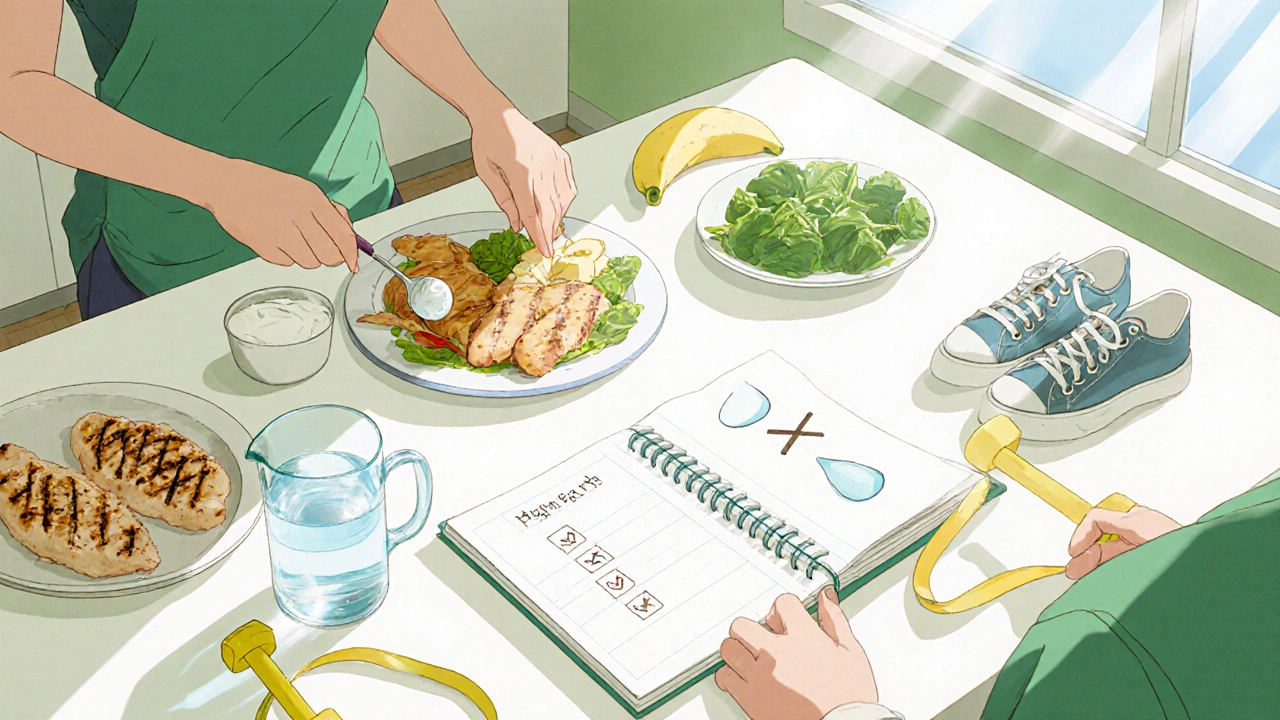
Core management strategies
Effective control hinges on a blend of medical, nutritional, and lifestyle tactics. Below is a practical roadmap you can follow with your healthcare team.
1. Medication review and tapering
Whenever possible, the first line is to reduce the steroid dose to the lowest effective amount. A slow taper prevents adrenal insufficiency - a potentially life‑threatening drop in natural cortisol. Banner Health recommends a reduction of 5‑10 % every 1‑2 weeks, guided by symptom monitoring and blood tests.
2. Sodium restriction & hydration
Excess salt fuels fluid retention. The NHS advises keeping daily sodium under 1,500 mg for patients experiencing steroid‑related swelling. Pair this with at least 2 L of water per day - paradoxically, adequate hydration helps the kidneys flush excess fluid.
3. Balanced diet and weight management
Focus on whole‑food nutrition:
- High‑protein meals (lean meat, legumes, Greek yogurt) to preserve muscle mass.
- Potassium‑rich foods (bananas, spinach, avocado) that counteract sodium.
- Limit refined carbs and sugary drinks, which can aggravate glucocorticoid‑driven appetite spikes.
Clinical observations from the Cleveland Clinic show modest weight loss (1-2 kg) within two weeks of cutting salt and increasing water improves facial puffiness for 72 % of compliant patients.
4. Gentle exercise and resistance training
While high‑intensity cardio may temporarily increase fluid retention, low‑impact activities (walking, swimming) combined with light resistance work (body‑weight squats, resistance bands) help remodel body composition and mitigate muscle weakness - a common steroid side effect noted by Banner Health.
5. Metabolic monitoring
Glucocorticoids raise blood glucose and can trigger steroid‑induced diabetes. The PMC article suggests fasting glucose checks every 3-6 months during long‑term therapy. Early detection lets you adjust diet or add antidiabetic medication before serious complications arise.
6. Psychological support
Body‑image distress is real. Hale et al. (2024) found that visible side effects like moon face reduced treatment adherence in 23 % of inflammatory‑bowel‑disease patients. Talking to a counselor, joining a support group (e.g., Cushing’s Support & Research Foundation), or using cognitive‑behavioral tools can improve quality of life and keep you on track with therapy.
Comparison of core management approaches
| Strategy | Primary Goal | Typical Timeline for Visible Improvement | Key Actions |
|---|---|---|---|
| Medication taper | Reduce hormonal drive behind fat redistribution | 4-12 weeks (depends on taper speed) | Gradual dose reduction under physician supervision |
| Sodium restriction & hydration | Decrease fluid retention | 10-14 days for noticeable swelling reduction | Limit sodium < 1,500 mg/day, drink ≥2 L water |
| Dietary & weight control | Limit overall calorie excess and improve fat distribution | 2-4 weeks for modest facial slimming | High‑protein meals, potassium‑rich foods, avoid refined carbs |
| Exercise (low‑impact + resistance) | Preserve muscle, boost metabolism | 3-6 weeks for gradual tone improvement | 30 min walking + 15 min resistance 3×/week |
| Psychological support | Mitigate body‑image distress, improve adherence | Variable; benefits often seen after 1-2 sessions | Counseling, support groups, CBT tools |
Practical checklist you can print out
- Schedule a medication review with your prescriber within the next week.
- Track daily sodium intake using a phone app; aim for < 1,500 mg.
- Drink at least 2 L of water daily; set hourly reminders.
- Plan three balanced meals with 25‑30 g protein each; add a banana or spinach salad for potassium.
- Start a 20‑minute walk after dinner, three times a week.
- Add a simple resistance routine (e.g., wall push‑ups, band rows) twice weekly.
- Schedule fasting glucose testing every 4‑6 months.
- Find a local or online support group; attend at least one session this month.
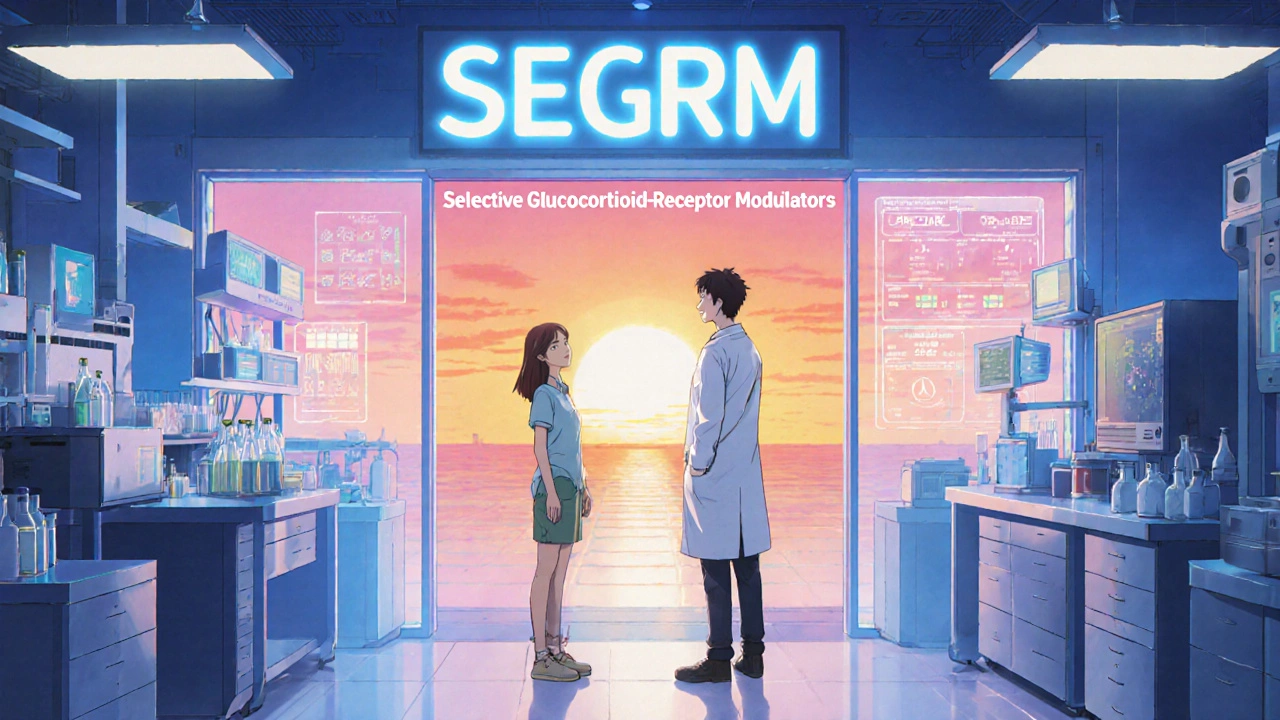
Common pitfalls to avoid
Even with a solid plan, people trip up:
- Stopping steroids abruptly. This can cause adrenal crisis - always taper under supervision.
- Relying solely on “quick‑fix” creams. Topical lipolytic agents are still experimental and won’t replace systemic changes.
- Over‑restricting calories. Too aggressive a cut can worsen muscle loss and fatigue.
- Ignoring mental health. Feeling embarrassed can lead to missed appointments and early discontinuation of therapy.
When to seek urgent medical attention
If you notice any of the following while on steroids, call your doctor immediately:
- Severe headache, visual changes, or sudden weight gain (>10 lb in a week).
- Persistent high fever or worsening swelling despite sodium restriction.
- Signs of adrenal insufficiency: extreme fatigue, dizziness, abdominal pain.
These could signal uncontrolled Cushing’s syndrome or a complication that needs rapid intervention.
Looking ahead: what’s on the research horizon?
Novel selective glucocorticoid‑receptor modulators (SEGRMs) are in Phase III trials and appear to cut the incidence of moon face by about 63 % (NIH update, 2023). While not yet available, they highlight the importance of staying informed about emerging therapies that may one day replace traditional steroids for many conditions.
How long does moon face last after stopping steroids?
Facial swelling typically fades within 6-12 months, but the exact timeline depends on how long you were on therapy and your individual metabolism. Consistent low‑salt diet and hydration can speed up the process.
Can exercise worsen the puffiness?
High‑intensity workouts may temporarily increase fluid retention, but low‑impact activities combined with resistance training are beneficial. Start gentle and monitor how your face feels.
Is there a medication that can reverse moon face without stopping steroids?
No approved drug specifically targets steroid‑induced facial fat. Research on topical lipolytic agents is promising but still experimental. The safest route remains dose adjustment plus lifestyle measures.
Should I monitor my blood sugar even if I don’t have diabetes?
Yes. Glucocorticoids raise glucose levels in many people. A fasting glucose check every 3‑6 months helps catch early steroid‑induced diabetes.
What’s the safest way to cut salt if I’m used to salty foods?
Swap processed snacks for fresh fruit, use herbs and spices (lemon, garlic, rosemary) for flavor, and read nutrition labels to keep daily sodium below 1,500 mg.

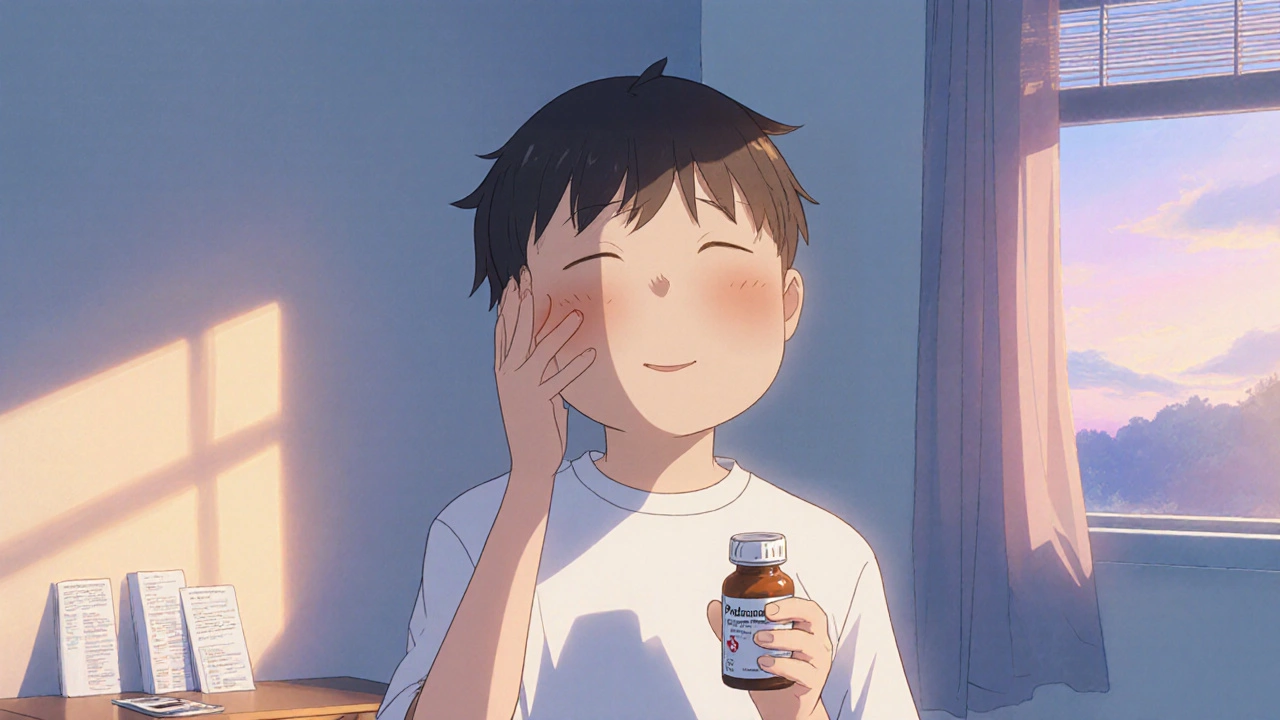
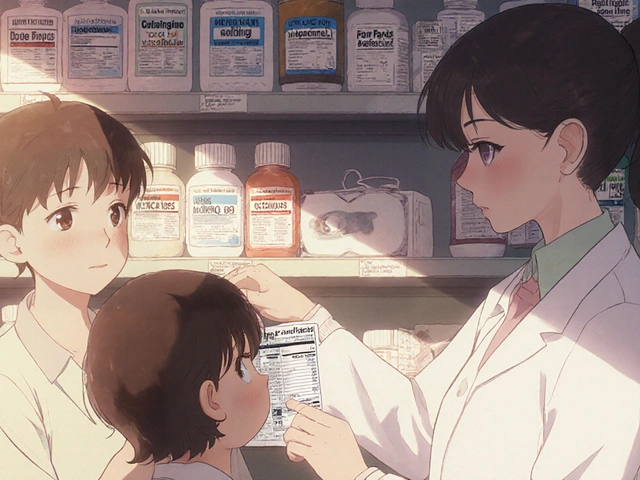
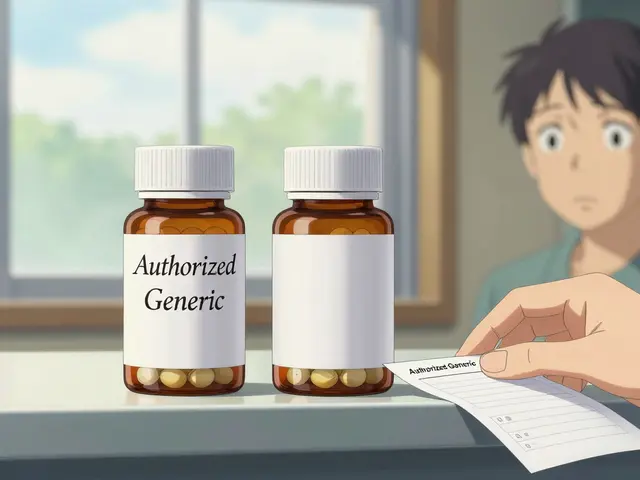


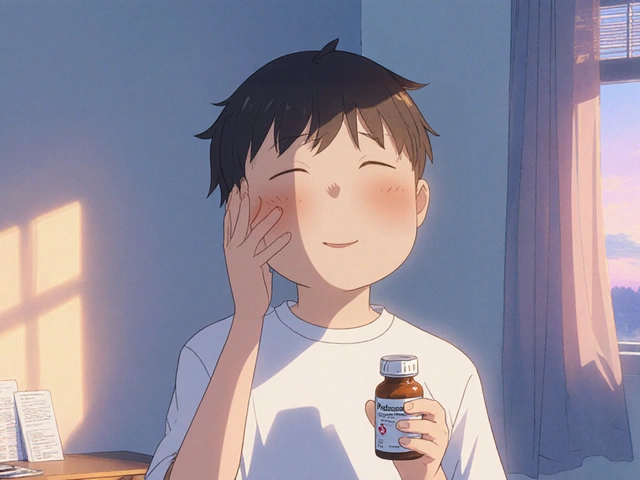
Comments
Jacqui Bryant
Great rundown-I'll start cutting the salt tomorrow!
Johnae Council
I love the sodium tip, but remember that tapering too fast can cause adrenal crisis, so always get a doctor’s green light before dropping 10 % a week.
Too rapid a reduction can leave your body scrambling for cortisol, leading to fatigue, nausea, or worse.
It’s also smart to track your blood pressure while you cut salt, because fluid shifts can make it swing unexpectedly.
If you’re still hungry, bulk up meals with extra lean protein or beans to keep the calories in check without adding carbs.
Small, steady steps usually win over dramatic overhauls when steroids are in the mix.
Manoj Kumar
Steroids may feel like a blessing when the inflammation finally eases, but the moon‑face side effect can be a real morale killer.
In many Indian households, we already feast on spices and carbs, so adding a high‑protein, low‑salt plan can feel like an uphill climb.
Yet the body’s cortisol receptors are like tiny dictators: they tell fat cells where to store the extra calories.
The good news is that even a modest reduction in sodium-say 1 g per day-can flush out a lot of the water weight that makes the face look puffy.
Pair that with a regular walk around your neighbourhood bazaar; the gentle movement keeps the circulation humming without shocking the adrenal system.
If you can find a handful of lentils, chickpeas, or paneer for breakfast, you’ll hit the protein target without resorting to processed meats.
Potassium‑rich foods like mango, spinach, or avocado act as natural antagonists to sodium, helping the kidneys excrete excess fluid.
Don’t forget to hydrate-drinking two liters of water a day may sound cliché, but it actually tricks the body into releasing retained water.
Monitoring blood sugar every few months is vital; even if you’re not diabetic, steroids can nudge you toward pre‑diabetes.
A quick finger‑stick test at home can give you peace of mind and a data point for your doctor.
If you notice that your mood dips as the face swells, consider a short counseling session-mental health is often an overlooked piece of the puzzle.
Support groups, whether online or in your city, can provide the camaraderie that makes sticking to a plan less lonely.
Research on selective glucocorticoid‑receptor modulators looks promising, but until they’re mainstream, lifestyle tweaks are our best bet.
Finally, be patient; the remodeling of facial fat can take months, but consistent effort usually yields visible thinning within three to six months.
Remember, you’re not just fighting a cosmetic nuisance; you’re protecting your long‑term metabolic health.
Carla Smalls
That philosophical take really hits home; the body does love to obey whatever hormone it’s given.
Start with tiny changes-swap one salty snack for a piece of fruit each day, and you’ll notice less puff by the weekend.
Adding a 10‑minute walk after dinner is easy to fit into most schedules and doesn’t stress the adrenal glands.
Keep a simple log of your sodium intake; the visual feedback can be surprisingly motivating.
Stick with it, and the moon‑face will start to recede.
Monika Pardon
Oh sure, just blame the pills and ignore the grand design of Big Pharma, who apparently love to keep us puffed up for profit.
Did you know the “low‑salt” advice was supposedly drafted by a committee that also markets salty crackers?
It’s almost as if they want us to chase the next “miracle” drug while we drown in sodium.
Anyway, keep your eyes open and your water bottle full-if the industry ever decides to pull the plug on steroids, we’ll be ready with homemade kale smoothies.
Just kidding… or am I?
Erin Leach
I get how disheartening the swelling can feel, especially when you’re already dealing with a tough condition.
Knowing you’re not alone in this makes a big difference, and the checklist you posted is a solid roadmap.
Take each step at your own pace-if the water goal feels like too much, start with half a litre and build up.
Remember to celebrate the tiny wins, like a day with less facial puff or a balanced plate.
We’re all rooting for you to feel better both inside and out.
Erik Redli
Honestly, I think all this diet talk is a distraction from the real problem: steroids are the only thing that actually works for many of us, so why fixate on a cosmetic side effect?
If you cut salt and add exercise, you’ll just be losing muscle and strength, which defeats the purpose of staying functional.
People need to accept the trade‑off rather than obsess over a temporary moon face.
Let the doctors handle the tapering; we shouldn’t be playing nutrition police on ourselves.
At the end of the day, the disease itself is far more dangerous than a few extra pounds.
Tim Waghorn
While the intention to advise caution is commendable, the statement that “cutting salt will automatically reduce facial puffiness” is oversimplified.
Clinical evidence indicates that sodium restriction primarily reduces extracellular fluid accumulation, whereas adipose redistribution requires dose adjustment and metabolic interventions.
Therefore, a more accurate recommendation would couple sodium limitation with gradual glucocorticoid tapering under endocrinological supervision.
Additionally, specifying the quantitative target-e.g., < 1,500 mg of sodium per day-is essential for reproducibility.
Precision in language helps both patients and clinicians align on realistic expectations.
Laura Hibbard
So, to pull it all together: keep the steroids at the lowest effective dose, trim the salt, stay hydrated, feed the muscles with protein, and check sugars now and then.
Don’t let the moon‑face become a badge of honor-use the checklist, lean on support groups, and remember that mental health matters just as much as the numbers on a lab report.
If you blend the practical steps with a dash of patience, the puff will gradually fade without sacrificing the benefits of your medication.
And hey, if anyone claims a miracle cream will vanish the fat overnight, we’ll all know where to find the next conspiracy thread.